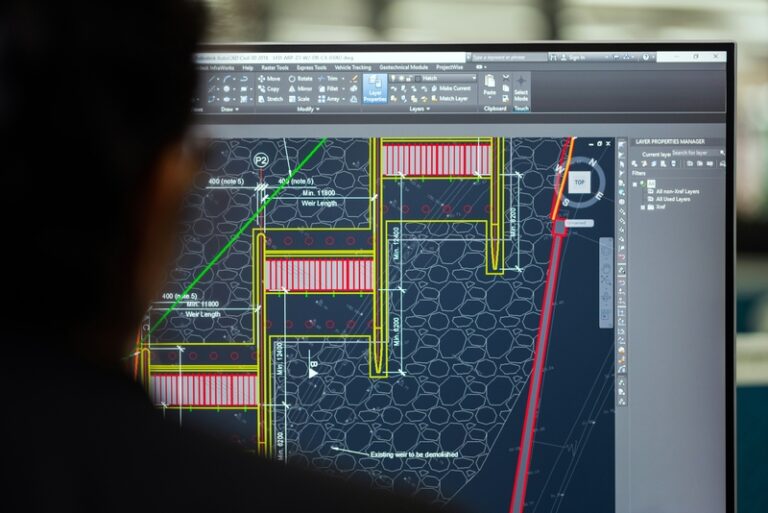
Let’s face it, manual estimating might feel comfortable, even nostalgic. There’s something oddly satisfying about scribbling on a notepad, crunching numbers by hand, or keeping that trusty calculator close. But if your business is still stuck in the paper-and-pencil era, it might be time for a wake-up call. Manual estimating, while simple, can quietly chip away at your time, your money, and even your credibility.
So, why is this still a thing? Maybe it’s a habit. Maybe it’s comfort. Maybe it’s the fear of learning yet another piece of software. But here’s the deal: sticking with manual systems can actually cost more in the long run, and not just in dollars.
Let’s break down the hidden dangers, one paper cut at a time.
Error Central: Human Mistakes Hit Hard
No one’s perfect. Especially not when you’re juggling multiple clients, trying to estimate materials, labor, and timelines all while your coffee kicks in. One miscalculation, even a tiny one, can throw off your entire quote.
Imagine quoting $1,200 instead of $12,000 because of a missed zero. That’s not just embarrassing, that’s profit down the drain. And it doesn’t have to be a big blunder to hurt. A few minor missteps here and there add up, especially if you’re working on tight margins.
When you’re manually entering numbers and doing calculations without any built-in checks, errors are bound to happen. And let’s not forget the dreaded moment when you realize the numbers don’t add up after you’ve already sent the quote. Yikes.
Time is Money—and Paper Takes Forever
Manual estimates aren’t just risky—they’re slow. Think about it: you jot something down, double-check your math, rewrite it neatly for the client, scan it or type it into an email, and hope you didn’t miss anything. That’s a lot of steps for something that could be done in minutes with the right tools.
And when you’re busy, those minutes matter. Spending hours each week on estimates is time you could be spending doing actual paid work, following up with leads, or planning your next move.
If you’re thinking, “But I’ve always done it this way,” ask yourself this: is your current process really working for you, or are you just used to the drag?
Lack of Transparency and Tracking
Here’s where things get messy. Manual systems don’t exactly play nice when it comes to record-keeping. Let’s say a client calls back asking for a revision on an old quote. Do you remember which notepad you used? Can you find the exact version you sent them last month? Probably not.
Unlike digital tools that track versions and changes automatically, manual systems rely on your memory and organizational skills. And let’s be honest, even the most organized among us misplace a notebook or forget to write down that one key detail.
This lack of transparency can cause friction, internally and with clients. If your team can’t easily access the latest estimate or understand how you arrived at certain numbers, confusion sets in fast.
Lost Papers = Lost Profits
We’ve all been there. That feeling when you’re 99% sure you wrote something down, but now it’s gone. Maybe it’s buried under a stack of papers. Maybe it went through the wash in your back pocket. Maybe the dog ate it (hey, it happens).
Whatever the cause, lost estimates are more than annoying—they can be costly. You might miss out on following up with a client, forget key figures, or have to redo the entire thing from scratch. And if you quoted something super competitive to win a job but can’t remember what it was? That’s a missed opportunity you may not get back.
With digital systems, backups happen automatically. You know where everything is. And if something does go wrong, you can usually recover it. Paper? Not so forgiving.
Scalability? Not So Much.
Manual estimating might work fine when it’s just you and a handful of clients. But what happens when you start to grow? When your team expands, your projects multiply, and your time becomes even more limited?
Paper systems don’t scale well. It’s hard to train new team members on a process that lives entirely in your head or in a mess of handwritten notes. It’s even harder to keep things consistent when everyone has their own way of estimating.
Digital tools can standardize your process, making it easier to grow without growing pains. They let your business run like a well-oiled machine—not a one-person show juggling clipboards.
Professionalism Takes a Hit
Let’s talk appearances. Sending your client a neat, branded digital estimate sends a message: you know your stuff. You’re organized. You’re modern. You take your business seriously.
Now picture sending them a scan of a handwritten note or a basic spreadsheet with no logo, no structure, and maybe even a coffee stain. Doesn’t exactly scream “professional,” does it?
First impressions count, especially when you’re bidding for a job or pitching a new client. A polished estimate isn’t just nice to have—it can be the difference between winning the job or being ghosted.
Missed Opportunities for Automation and Insights
One of the biggest losses with manual systems? The data. Or rather, the lack of it.
With digital estimating tools, you get insights. How many estimates turned into actual sales? What’s your average quote amount? Which services bring in the most revenue? That’s gold for decision-making.
Manual systems give you… silence. No automatic tracking. No reports. No smart recommendations. You’re flying blind, and that makes it hard to grow, improve, or even know what’s working.
Plus, automation saves time. Templates, autofill, and price libraries let you build estimates in a snap. Less time quoting means more time closing.
It’s Time to Ditch the Dusty Notebook
Here’s the bottom line: manual estimating is holding you back. It’s slow, prone to error, and honestly, a little outdated. Sure, there’s a certain charm to doing things the old-school way. But in today’s fast-paced business world, speed, accuracy, and professionalism matter more than ever.
Making the switch doesn’t mean losing control. It means gaining more control—more consistency, better records, cleaner presentations, and smarter insights.
There are plenty of affordable (even free) tools out there that can help you upgrade without breaking the bank. And once you make the leap? You’ll wonder why you didn’t do it sooner.
So go ahead. Retire the sticky notes. Hang up the clipboard. And step into a smoother, smarter way to estimate.
Because when you stop cutting corners (and paper), your profits won’t bleed either.






